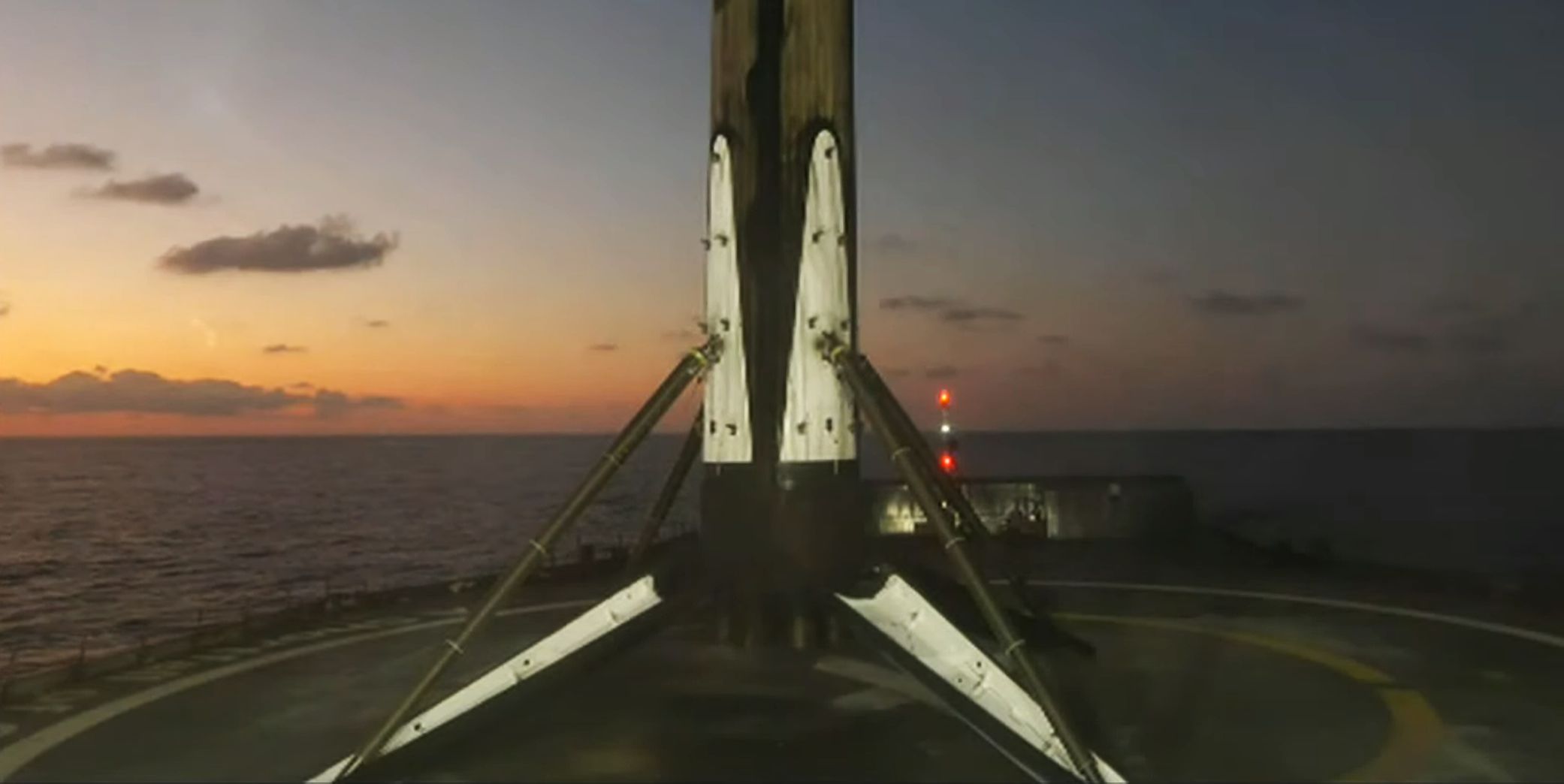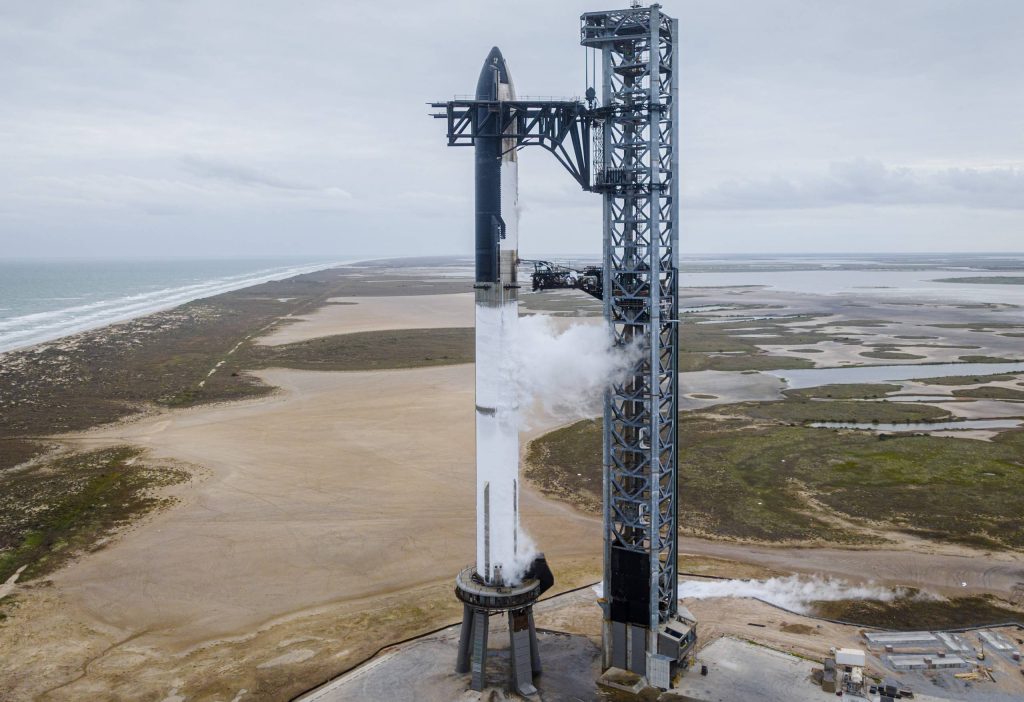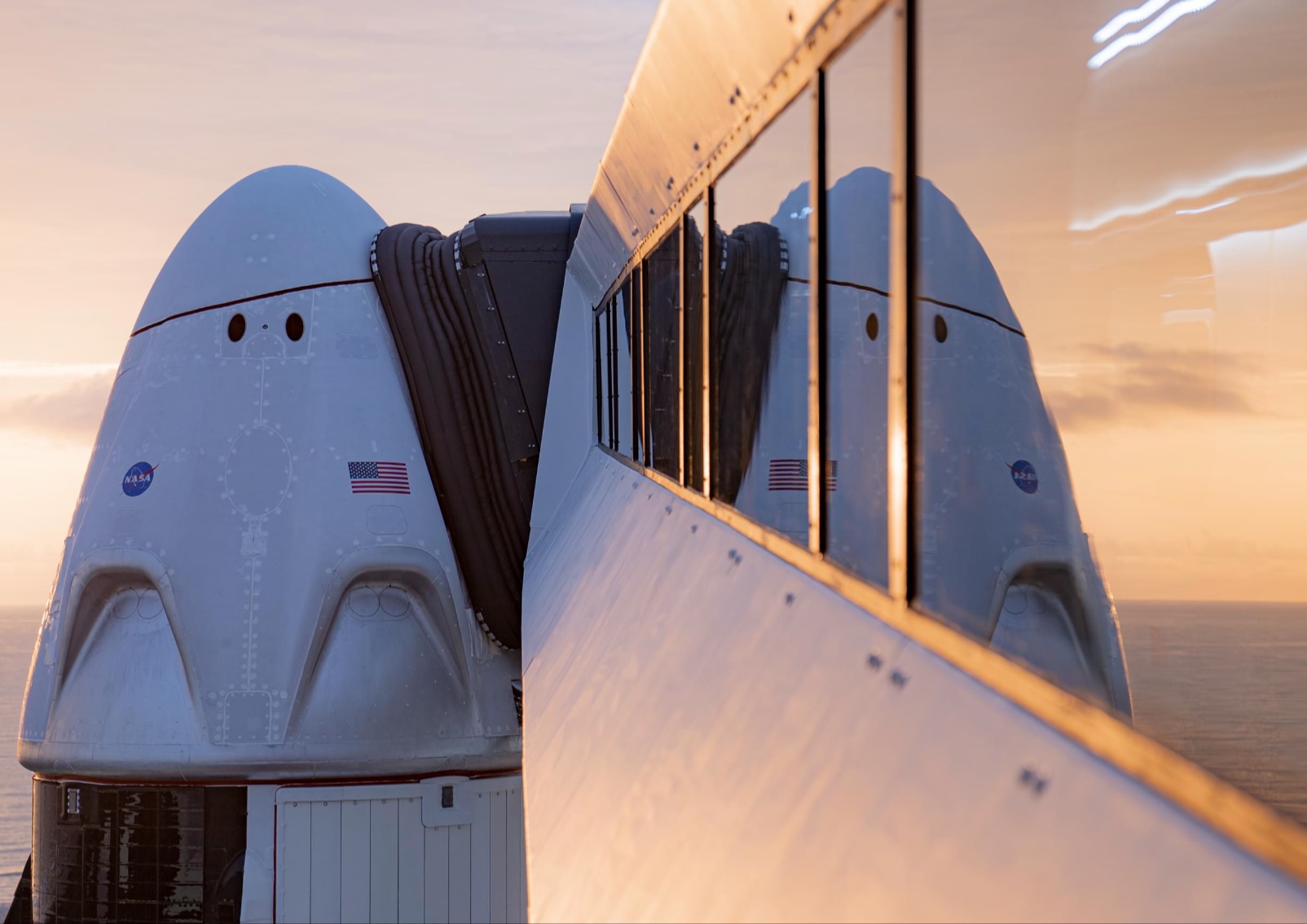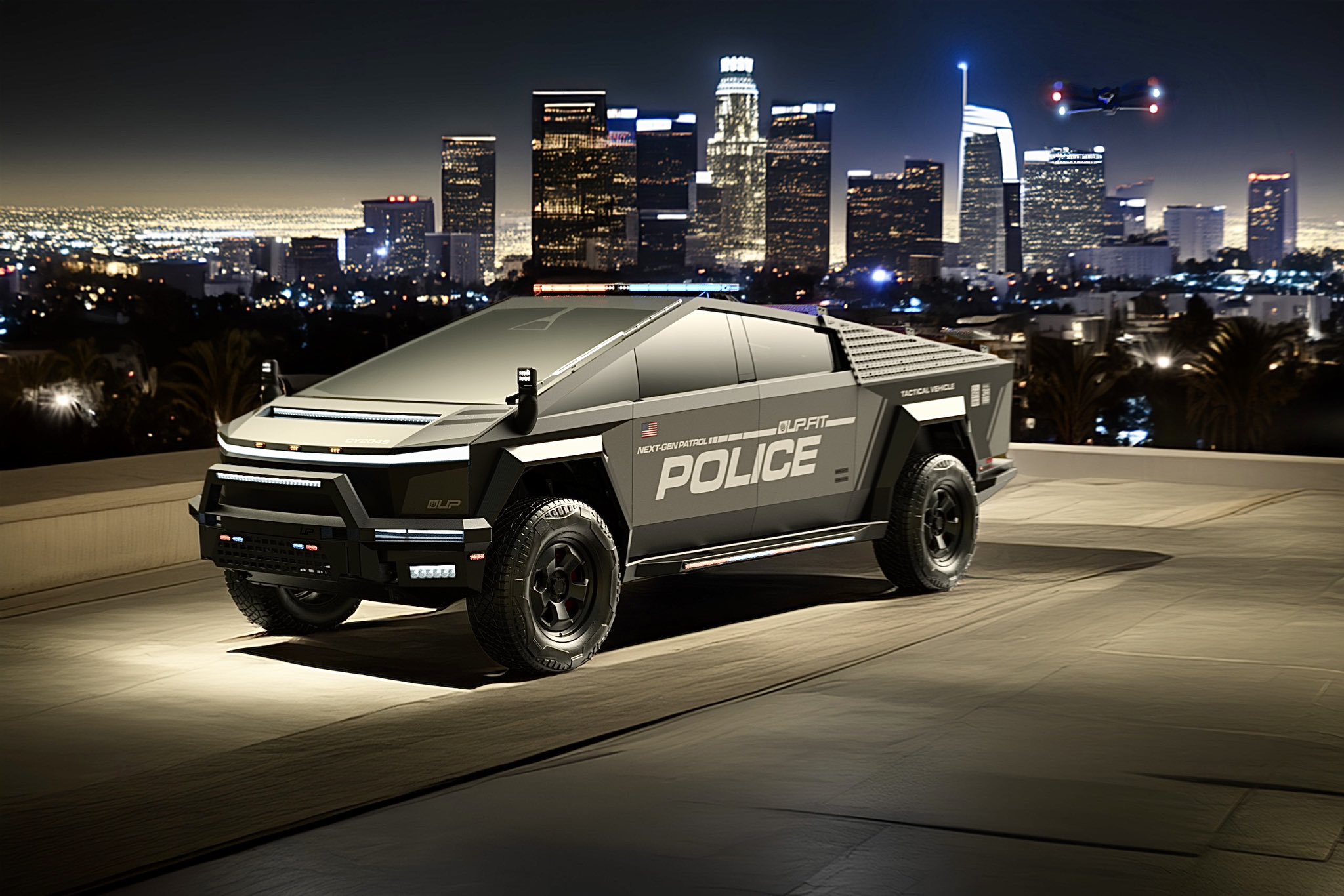

News
SpaceX Falcon rocket aces 100th consecutive rocket landing
SpaceX has successfully launched its first batch of next-generation Starlink V2 satellites, likely kicking off a new era of affordability for the constellation.
Simultaneously, demonstrating just how far SpaceX is ahead of its competitors and the rest of the spacefaring world, the Starlink 6-1 launch culminated in the 100th consecutively successful landing of a Falcon rocket booster. As a result, SpaceX’s landing reliability now rivals the launch reliability of some of the most reliable rockets ever flown. That extraordinary feat bodes well for SpaceX’s next-generation Starship rocket, which is designed to propulsively land humans on the Earth, Moon, Mars, and beyond.
The update that's rolling out to the fleet makes full use of the front and rear steering travel to minimize turning circle. In this case a reduction of 1.6 feet just over the air— Wes (@wmorrill3) April 16, 2024
SpaceX’s landing reliability milestone is made all the more impressive by the lack of immediate competition. More than seven years after SpaceX’s first successful Falcon 9 booster landing and six years after the company’s first successful Falcon booster reuse, Falcon 9 and Falcon Heavy are still the only reusable orbital-class rockets in operation.
Blue Origin has had some success reusing the first stage of its suborbital New Shepard rocket. Rocket Lab has also recovered small Electron rocket boosters from the ocean, but it’s yet to catch a booster with a helicopter – a necessity for cost-effective reuse. Many other companies have announced or begun developing their own partially or fully-reusable rockets. But even in a best-case scenario, the most promising of those potentially competitive rockets are still a year or two from their first launch attempts, let alone their first successful recoveries and reuses.
SpaceX debuted the Falcon 9 rocket behind most of its successful booster recoveries and reuses in June 2010. SpaceX recovered a Falcon 9 booster for the first time in December 2015 and reused a (different) booster for the first time in March 2017. It completed nearly all of that risky development work during launches for paying customers.
Even after the first success, many unsuccessful landing attempts followed as SpaceX pushed the performance envelope and discovered new failure modes. Falcon’s most recent landing failure occurred during a Starlink launch in February 2021 and was caused by a hole in a flexible ‘skirt’ meant to keep Earth’s superheated atmosphere out of the flight-proven booster’s engine section.
However, every landing since Falcon 9’s Starlink-19 landing failure has been successful. On February 27th, 2023, almost exactly two years after that failure, Falcon 9 booster B1076 touched down on one of SpaceX’s three drone ships, marking the rocket family’s 100th consecutively successful landing. Starlink 6-1 was also the Falcon family’s 183rd consecutively successful launch, as a Falcon landing failure has never prevented the completion of a mission’s primary objective.
Launch-wise, Falcon 9 and the Falcon family have already become the most statistically reliable rockets in history. Very few rockets in history have managed 100 consecutively successful launches, let alone landings. For example, according to spaceflight reporter Alejandro Romera, the next most reliable American rocket – the McDonnell Douglas Delta II – narrowly achieved 100 consecutively successful launches before its retirement in 2018. The landing reliability of SpaceX’s Falcon rockets is thus tied with the launch reliability of the most reliable American rocket not built by SpaceX.
Additionally, SpaceX Falcon booster landings are now statistically more reliable than the launches of United Launch Alliance’s much-touted Atlas V rocket, which has (more or less) successfully launched 97 times.

Falcon’s landing reliability is an encouraging sign for SpaceX’s next-generation Starship rocket. For Starship to fully achieve SpaceX’s goals, it will eventually need to be able to propulsively land humans on Earth and at other destinations throughout the solar system. SpaceX currently has no plans no plans to develop an independent crew escape system for Starship, meaning that the rocket itself will instead have to demonstrate extraordinary overall reliability. SpaceX executives have stated that Starship will only be deemed safe enough to launch humans once it has completed “hundreds” of successful launches and, presumably, landings.
Falcon has managed 100 successful landings in a row despite large gaps in redundancy. Most landing burns are conducted with a single Merlin 1D engine. Any issue with that engine would likely result in a failed landing. Falcon boosters also have four landing legs and four grid fins powered by a single hydraulic pump. The failure of that pump or one of four legs have demonstrably doomed earlier landings.
Starship’s much larger size and excess performance could provide a larger margin for error and allow for more redundancy. But Falcon has demonstrated that that even a rocket with multiple glaring single-points-of-failure can achieve 100 consecutively successful landings.
News
SpaceX’s Crew-11 mission targets July 31 launch amid tight ISS schedule
The flight will lift off from Launch Complex 39A at Kennedy Space Center in Florida.

NASA and SpaceX are targeting July 31 for the launch of Crew-11, the next crewed mission to the International Space Station (ISS). The flight will lift off from Launch Complex 39A at Kennedy Space Center in Florida, using the Crew Dragon Endeavour and a Falcon 9 booster.
Crew Dragon Endeavour returns
Crew-11 will be the sixth flight for Endeavour, making it SpaceX’s most experienced crew vehicle to date. According to SpaceX’s director of Dragon mission management, Sarah Walker, Endeavour has already carried 18 astronauts representing eight countries since its first mission with NASA’s Bob Behnken and Doug Hurley in 2020, as noted in an MSN report.
“This Dragon spacecraft has successfully flown 18 crew members representing eight countries to space already, starting with (NASA astronauts) Bob (Behnken) and Doug (Hurley) in 2020, when it returned human spaceflight capabilities to the United States for the first time since the shuttle retired in July of 2011,” Walker said.
For this mission, Endeavour will debut SpaceX’s upgraded drogue 3.1 parachutes, designed to further enhance reentry safety. The parachutes are part of SpaceX’s ongoing improvements to its human-rated spacecraft, and Crew-11 will serve as their first operational test.
The Falcon 9 booster supporting this launch is core B1094, which has launched in two previous Starlink missions, as well as the private Ax-4 mission on June 25, as noted in a Space.com report.
The four-members of Crew-11 are NASA astronauts Zena Cardman and Mike Fincke, as well as Japan’s Kimiya Yui and Russia’s Oleg Platonov.
Tight launch timing
Crew-11 is slated to arrive at the ISS just as NASA coordinates a sequence of missions, including the departure of Crew-10 and the arrival of SpaceX’s CRS-33 mission. NASA’s Bill Spetch emphasized the need for careful planning amid limited launch resources, noting the importance of maintaining station altitude and resupply cadence.
“Providing multiple methods for us to maintain the station altitude is critically important as we continue to operate and get the most use out of our limited launch resources that we do have,” Spetch stated.
Lifestyle
EV fans urge Tesla to acquire Unplugged Performance for edge in fleet and security industry
Unplugged Performance has built a name for itself by producing performance upgrades for Tesla vehicles.

A growing number of Tesla enthusiasts and longtime community voices are calling on the electric vehicle maker to acquire Unplugged Performance, a California-based aftermarket company best known for tuning Tesla vehicles and developing specialized government fleet solutions under its UP.FIT division.
The idea was once considered a niche proposal among EV fans, but it is now gaining serious attention not just as a performance play but as a strategic move to deepen Tesla’s roots in the fleet and security industry.
A strategic fit
Unplugged Performance has built a name for itself by producing performance upgrades for Tesla vehicles, from track-optimized components to visual and aerodynamic upgrades. But in recent years, its UP.FIT division has pivoted toward a more functional future by outfitting Tesla vehicles like Model Ys for police, military, and government use.
That work has sparked growing calls for closer collaboration with Tesla, especially as the EV maker increasingly leans into autonomy, AI, and fleet services as core components of its next chapter.
“I posted this four years ago, but I think it’s more true now than ever,” wrote Whole Mars Catalog, a well-known Tesla investor and FSD Beta tester, on X. “Tesla should buy Unplugged. But not just as a Performance division. What they are doing with UP.FIT unlocks large government and commercial fleet purchases that can improve utilization.”
Tesla fans such as shareholder Sawyer Merritt echoed the sentiment, calling Unplugged a “great fit within Tesla.” adding, “They are literally located directly next to Tesla’s design studio in Hawthorne.”
Enabling the next wave
Supporters of the idea noted that integrating Unplugged into Tesla’s corporate structure could help accelerate the adoption of autonomous technologies in government sectors. With UP.FIT patrol cars already in use across some U.S. police departments, Tesla fans envisioned a future where self-driving Teslas could potentially revolutionize law enforcement, search-and-rescue, and public service logistics.
“Just imagine how autonomous patrol cars could transform policing and bring us into a safer future,” the veteran FSD tester wrote.
The benefits could also extend to Tesla’s existing consumer base. “They also have some incredible products in the works that I think will appeal to many ordinary Tesla drivers — not just those looking for performance or mods. Stuff that’s so good it should have come straight from the design studio next door,” Whole Mars Catalog noted.
Unplugged Performance, founded in 2013, shares not just a product vision with Tesla, but also geography. Its Hawthorne headquarters sits directly adjacent to Tesla’s design studio, and the two companies have maintained a close working relationship over the years. The aftermarket firm has long positioned itself as a “mission-aligned” partner to Tesla.
In response to the recent calls for acquisition, Unplugged Performance acknowledged the support from the community. “Our very existence is to support the Tesla mission with @UpfitTesla and @UnpluggedTesla,” Unplugged CEO Ben Schaffer posted on X. “We love working with Tesla and are grateful for the community’s support since 2013!”
News
Tesla debuts hands-free Grok AI with update 2025.26: What you need to know
All new Tesla vehicles delivered on or after July 12, 2025, will include Grok AI out of the box

Tesla has begun rolling out Grok, an in-car conversational AI assistant developed by xAI, to eligible vehicles starting July 12. The feature marks the most direct integration yet between Elon Musk’s artificial intelligence startup and Tesla’s consumer product lineup, offering drivers hands-free access to a chat-style companion while on the road.
Grok comes pre-installed on new vehicles
According to Tesla’s FAQ page for the feature, all new vehicles delivered on or after July 12, 2025, will include Grok AI out of the box. Owners of older vehicles may gain access through an over-the-air update, provided their vehicle meets a few hardware and software requirements.
Specifically, Grok is currently only supported on Tesla models equipped with an AMD infotainment processor and running vehicle software version 2025.26 and higher. Compatible models include the Model S, Model 3, Model X, Model Y, and Cybertruck. A Premium Connectivity subscription or active Wi-Fi connection is also required.
Tesla notes that additional vehicle compatibility may arrive in future software updates.
Grok’s features and limitations for now
Drivers can engage with Grok using the App Launcher or by pressing and holding the voice command button on the steering wheel. Grok is designed to answer questions and hold conversations using natural language, offering responses tailored to its chosen personality—ranging from “Storyteller” to the more eccentric “Unhinged.”
For fun, Tesla posted a demonstration of Grok likely running on “Unhinged” talking about what it would do to Optimus when they are on a date, much to the shock of the humanoid robot’s official social media account.
It should be noted, however, that Grok cannot currently issue commands to the vehicle itself, at least for now. Traditional voice commands for tasks like climate control, navigation, or media remain separate from Grok as of writing.
The feature is being released in Beta and does not require a Grok account or xAI subscription to activate, although that policy may change over time.
Grok privacy and in-car experience
Tesla emphasizes that interactions with Grok are securely processed by xAI and not linked to a user’s Tesla account or vehicle. Conversations remain anonymous unless a user signs into Grok separately to sync their history across devices.
Tesla has also begun promoting Grok directly on its official vehicle webpages, showcasing the feature as part of its in-car experience, further highlighting the company’s increasing focus on AI and infotainment features on its all-electric vehicles.
-

 Elon Musk2 weeks ago
Elon Musk2 weeks agoTesla investors will be shocked by Jim Cramer’s latest assessment
-

 Elon Musk2 days ago
Elon Musk2 days agoxAI launches Grok 4 with new $300/month SuperGrok Heavy subscription
-

 Elon Musk5 days ago
Elon Musk5 days agoElon Musk confirms Grok 4 launch on July 9 with livestream event
-

 News1 week ago
News1 week agoTesla Model 3 ranks as the safest new car in Europe for 2025, per Euro NCAP tests
-

 Elon Musk1 week ago
Elon Musk1 week agoxAI’s Memphis data center receives air permit despite community criticism
-

 News2 weeks ago
News2 weeks agoXiaomi CEO congratulates Tesla on first FSD delivery: “We have to continue learning!”
-

 News2 weeks ago
News2 weeks agoTesla sees explosive sales growth in UK, Spain, and Netherlands in June
-

 Elon Musk2 weeks ago
Elon Musk2 weeks agoTesla scrambles after Musk sidekick exit, CEO takes over sales
















